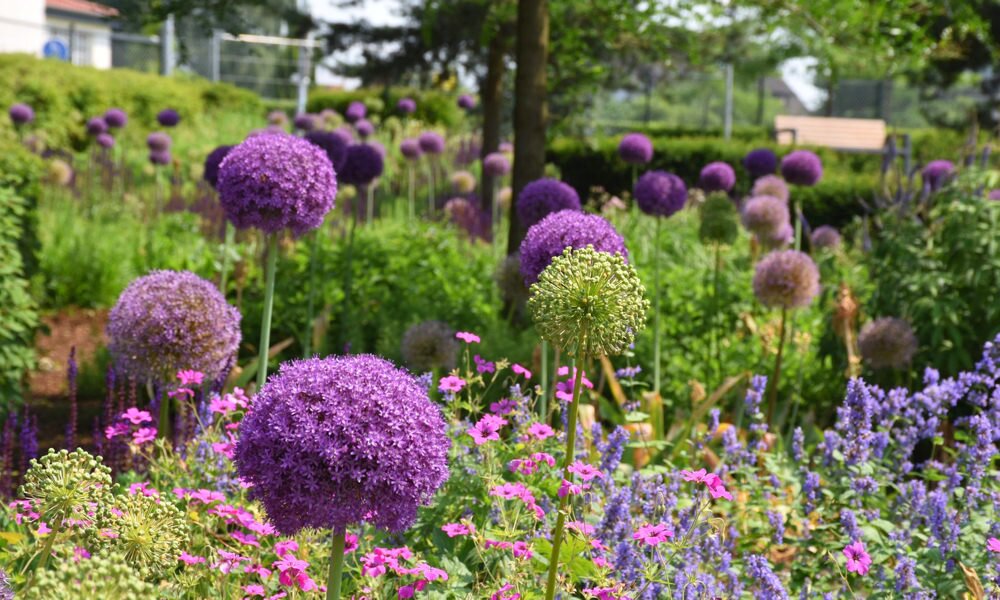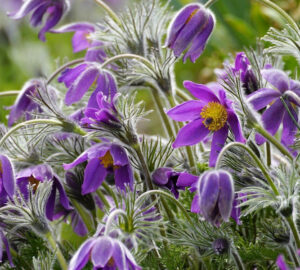Welcome to a world of captivating blossoms and captivating elegance! In this article, we invite you to embark on a journey through the enchanting realm of ornamental onions, where spherical flower heads sway with grace, and vibrant colors ignite your garden with stunning allure. Get ready to uncover the secrets behind these mesmerizing plants, from their origin to their care needs, and unleash the magic they can bring to your outdoor oasis.
Ornamental onions, scientifically known as Alliums, are popular flowering plants that can add beauty and interest to any garden. Let’s explore their origin, appearance and care needs.
Origin
Ornamental onions belong to the genus Allium, which is a large family of flowering plants that includes onions, garlic, chives and leeks. Many species of Allium are native to various parts of Europe, Asia and North America. They have been cultivated for centuries and are now widely grown in gardens around the world.
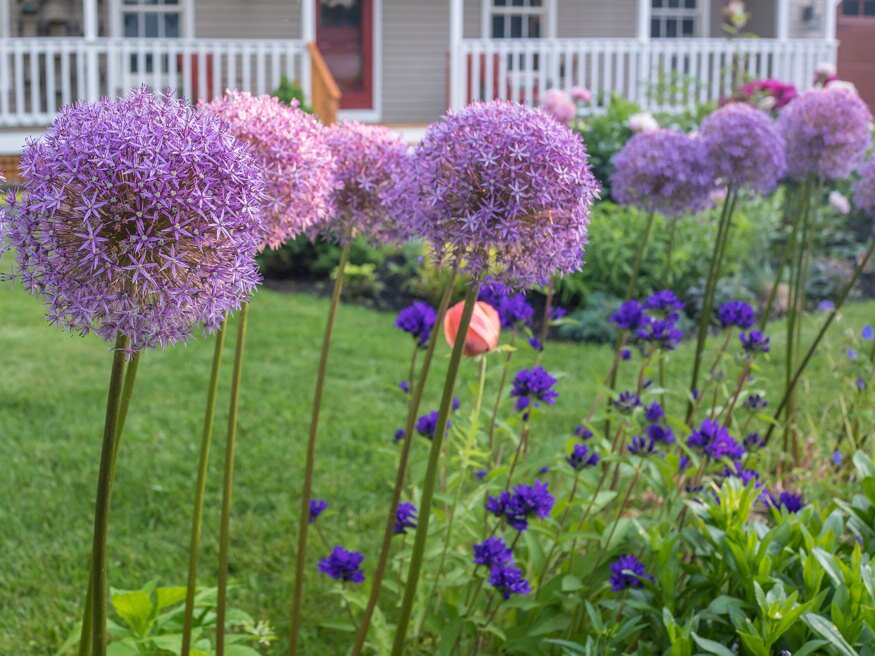
Appearance
Ornamental onions are known for their unique and striking spherical flower heads that sit atop tall, sturdy stems. The flowers range in color from shades of purple, lavender and pink to white and yellow. They can vary in size, from small compact flower heads to larger, more dramatic displays. The foliage of ornamental onions is typically long and slender, often resembling grass or strappy leaves.
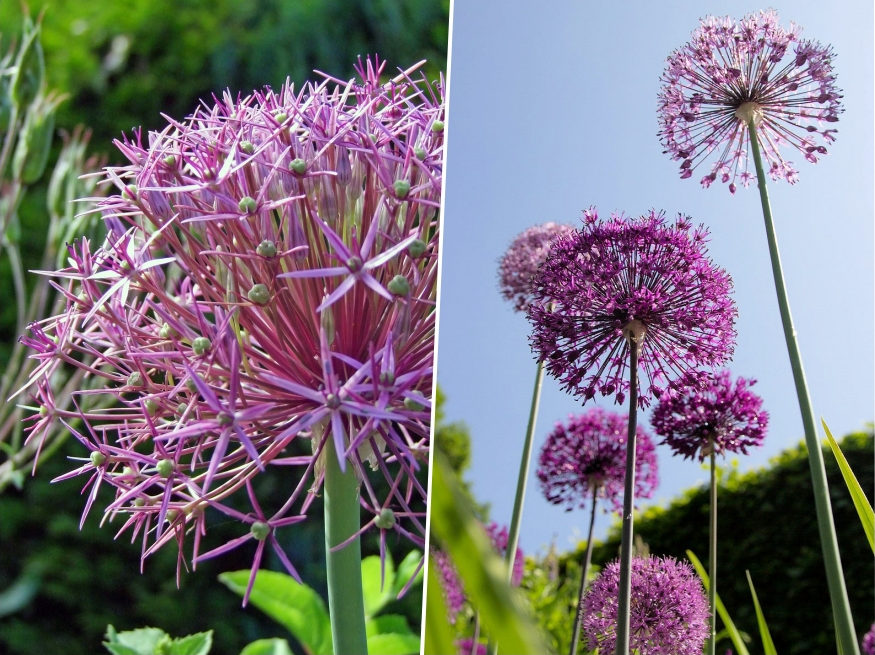
Cultivation and Care
Here are some essential care tips for ornamental onions:
1. Sunlight
Ornamental onions thrive in full sun, so choose a location that receives at least 6 hours of direct sunlight per day for optimal growth and abundant blooms. Most ornamental onions prefer full sun, although some species can tolerate partial shade.
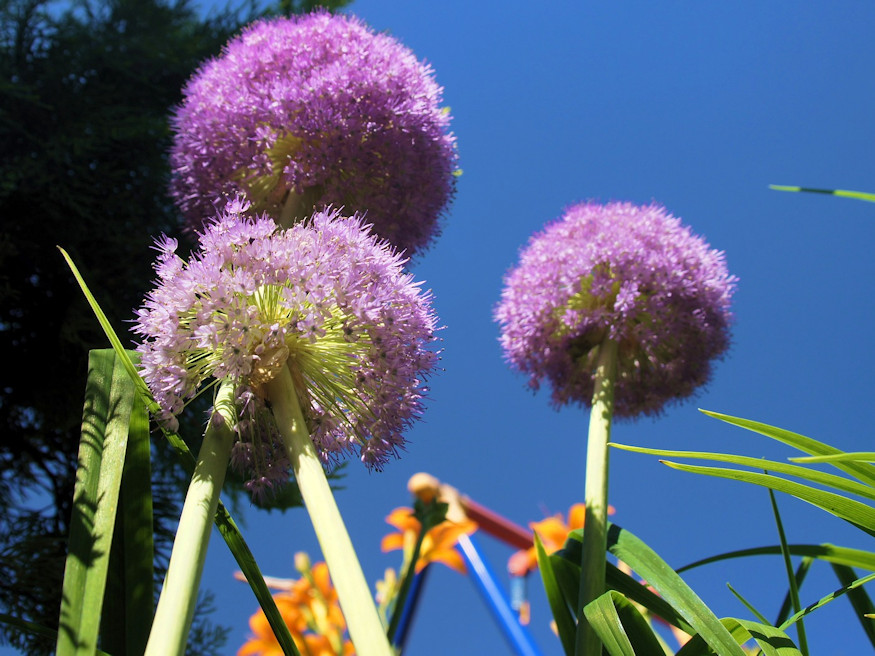
2. Soil
Well-draining soil is crucial for the successful growth of ornamental onions. They prefer fertile soil with good organic content. Avoid waterlogged areas, as excess moisture can cause bulb rot. If your soil is heavy or compacted, consider amending it with compost or well-rotted manure to improve drainage and fertility.
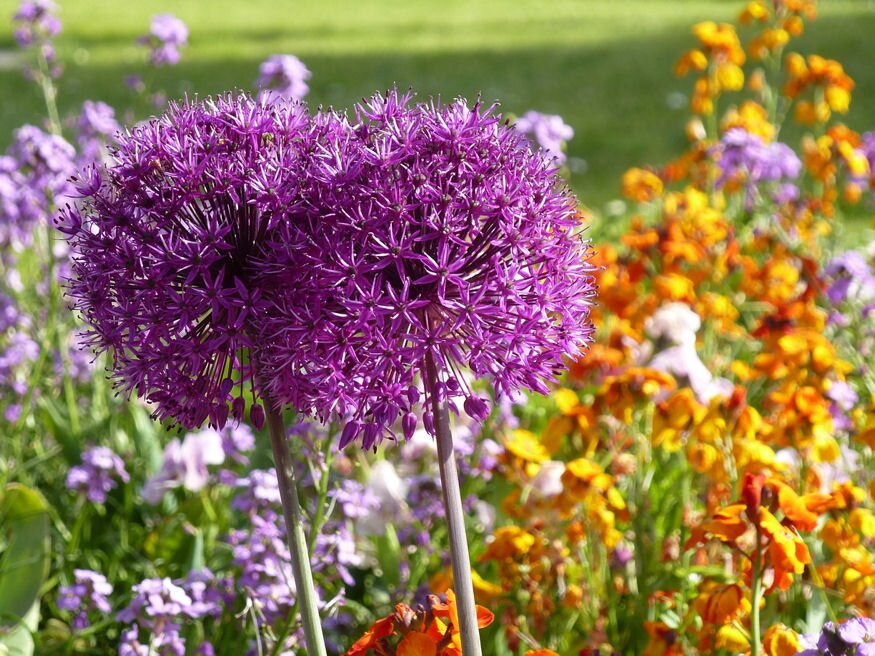
3. Planting
Plant the bulbs in the fall, usually a few weeks before the ground freezes. Dig a hole that is two to three times the depth of the bulb and place it with the pointed end facing upward. Remember to provide adequate spacing between the bulbs to allow for proper growth and airflow.
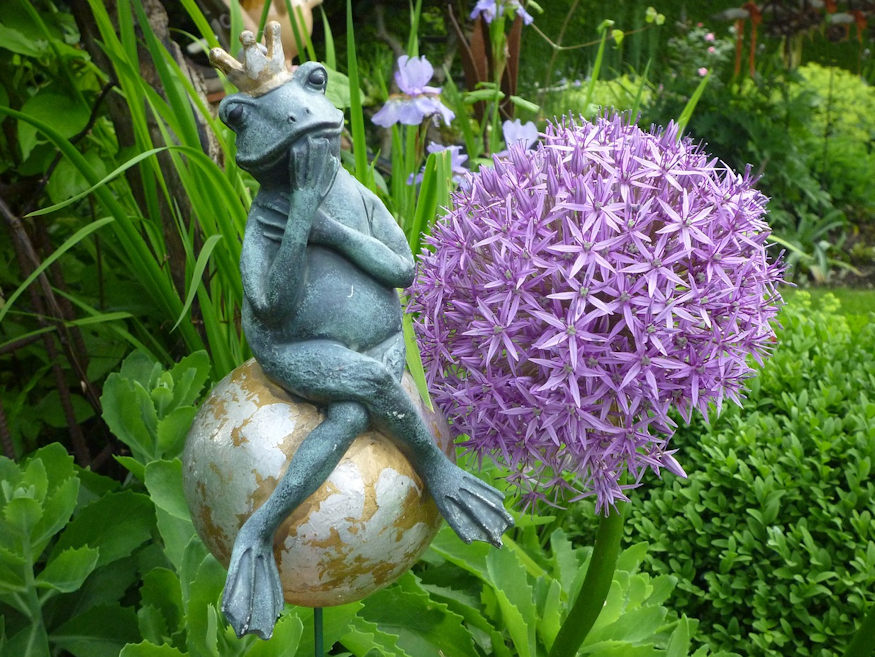
4. Watering
While ornamental onions are relatively drought-tolerant, they still require regular watering, especially during dry spells. However, it’s important to avoid overwatering, as excessive moisture can cause bulb rot.

5. Fertilization
Before planting, you can incorporate compost or well-rotted manure into the soil to provide nutrients. In subsequent years, you can apply a balanced slow-release fertilizer in early spring.
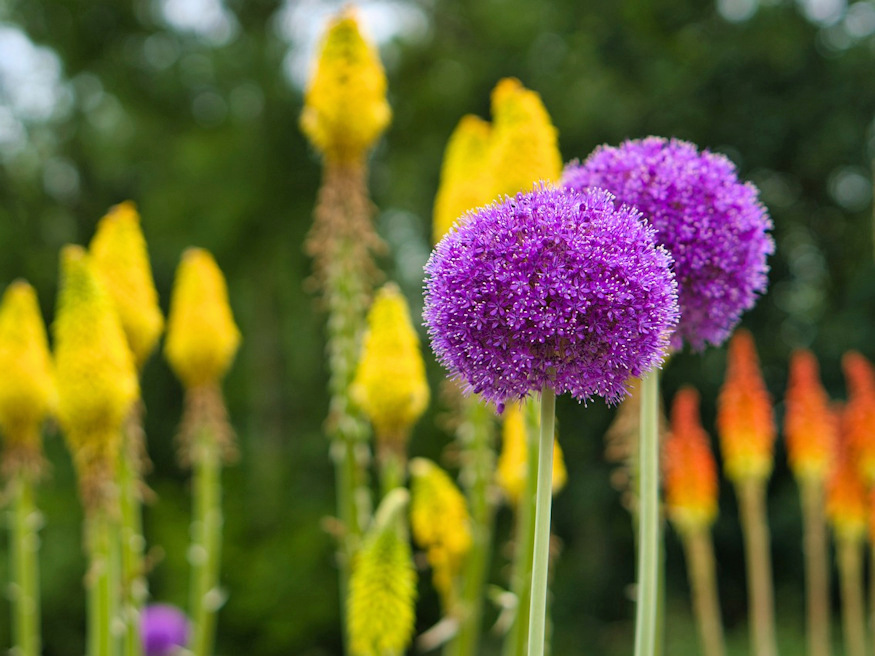
6. Maintenance
Remove spent flower heads to prevent self-seeding and to redirect the plant’s energy back into bulb development. After the foliage dies back in late spring or early summer, you can trim it down to the ground. This allows the plant to focus its energy on storing nutrients in the bulb for the next growing season.
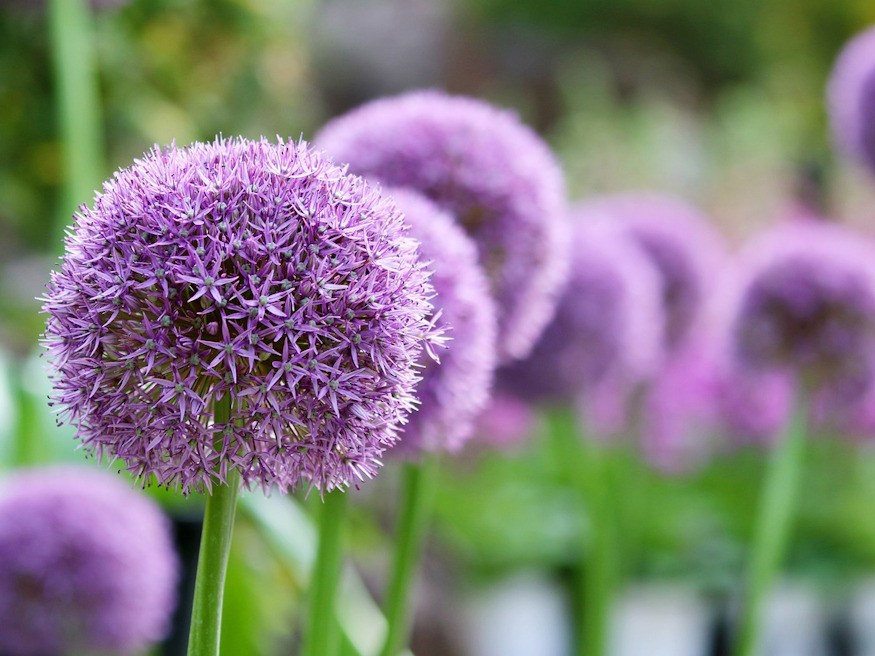
7. Pests and Diseases
Ornamental onions are generally resistant to pests and diseases. However, they may occasionally face challenges such as onion fly or bulb rot. Proper care, including good soil drainage and adequate spacing, can help prevent these issues.
Placement
When selecting the perfect spot to plant ornamental onions in your garden, consider the following advice:
- Companion Plants: Ornamental onions can be beautifully complemented by a variety of plants. Consider planting them alongside other perennials such as daylilies, coneflowers, salvias, or ornamental grasses for a dynamic and visually appealing garden display. The contrasting textures and colors will create a stunning visual impact.
- Height and Placement: Take into account the height of your ornamental onion varieties when planning their placement. Taller species like Allium giganteum or Allium ‘Purple Sensation’ work well as focal points in the middle or back of flower beds, while shorter varieties like Allium roseum or Allium karataviense are suitable for the front of borders or rock gardens.
- Grouping and Mass Planting: To create a striking visual impact, consider planting ornamental onions in groups or clusters rather than as single specimens. Mass planting them in drifts or sweeping beds can create a breathtaking effect, allowing their vibrant colors and unique flower heads to truly shine.
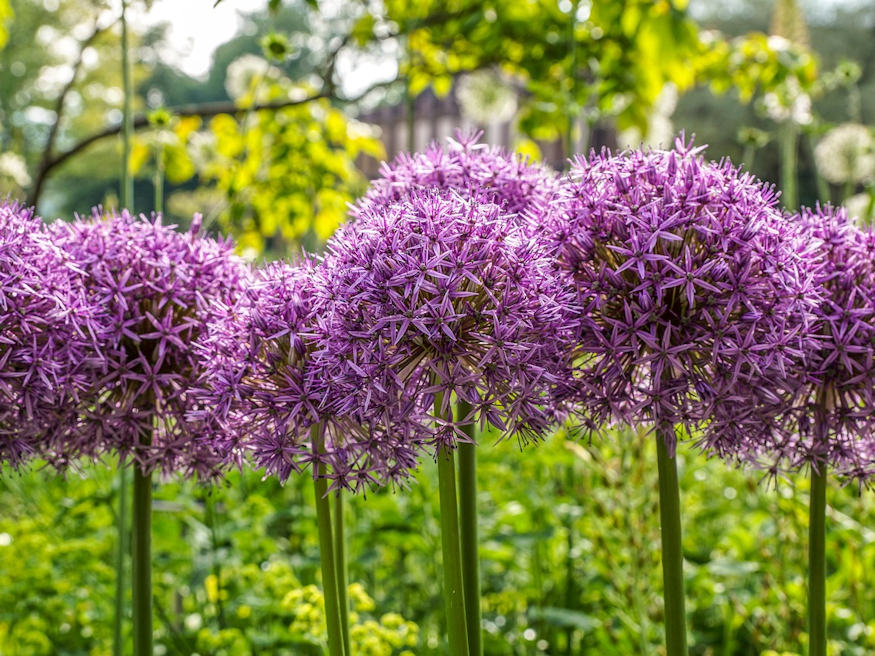
Ornamental Onions vs. Edible Onions
Ornamental onions and edible onions, despite belonging to the same genus Allium, have distinct characteristics that set them apart.
- Firstly, ornamental onions are primarily grown for their aesthetic appeal, showcasing stunning spherical flower heads in an array of colors, while edible onions are cultivated for their bulbs or greens used in cooking.
- Secondly, ornamental onions often have larger, showier flowers compared to the more modest blooms of edible onions.
- Lastly, the foliage of ornamental onions tends to be more ornate, with slender, grass-like leaves, whereas edible onions typically have broader leaves. Overall, the main difference lies in their purpose and visual impact, with ornamental onions serving as captivating garden additions and edible onions fulfilling culinary needs.

Ornamental onions are versatile plants that can be used in various garden settings. They work well in flower beds, borders, rock gardens, or even as cut flowers in floral arrangements. Their unique appearance and low-maintenance nature make them a popular choice among gardeners.
We hope this introduction to ornamental onions helps new garden owners appreciate their beauty and encourages them to incorporate these stunning plants into their gardens.



